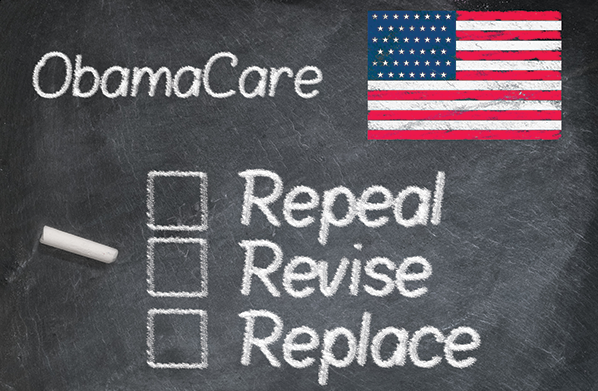Republican Senators have released their health reform bill, legislation that attempts to strike the balance necessary to pass the Senate with at least 50 votes. As is often the case with compromise, this bill will either succeed in pleasing everyone – or will please no one.
Like the House bill, the Senate bill will repeal the individual and employer mandates, expand HSAs, repeal most of the ACA's taxes, and importantly, allow states to opt out of the Essential Health Benefits (federal rules that force everyone to pay more money for certain services even if they do not need them), but keeps the age-26 rule, and guaranteed issue (the requirement that insurers offer policies to everyone).
Also like the House bill, the Senate bill reforms the structure of federal Medicaid funding to a per-capita allotment, using an even more conservative formula for funding the program for low-income people.
But in important ways, the Senate bill is less conservative than the House-passed version of the American Health Care Act: Where the House converted the Affordable Care Act subsidies to flat age-based tax credits, the Senate would effectively keep the ACA subsidies as is, with minor tweaks. It would slow the phase-out of the Medicaid expansion, which is likely to improve the 10-year coverage projections from the Congressional Budget Office.
As far as the waivers available to states, the Senate bill would not allow states to escape community rating – the requirement that insurers offer the same prices to everyone regardless of health status and other risk factors.
All of these points are likely to get pushback from conservatives, not just within the Senate (like Sens. Lee, Cruz, Paul), but also from House conservatives if the legislation goes to conference. And these moves to the middle will put the plan at risk for shouts of "Obamacare Lite!" from groups that oppose Obamacare.
It's worth noting that on two points – subsidies and Medicaid – the difference between the House and Senate is more or less a matter of math: To what extent will health insurance subsidies be means-tested versus age-based? One can imagine a compromise that incorporates both age and income in the subsidy equation. How long will the federal government fund the Medicaid expansion? The House and Senate could change the percentages of federal support for the expansion during years 2020 through 2024 to meet in the middle.
But the policy about community rating is a binary choice. Either lawmakers will allow it, or they won't. Allowing it, even in "Mother-may-I" waivers, where states must ask permission to do so, has earned House Republicans public ire. Why? Because the public doesn't much like the idea of people with "pre-existing conditions" facing higher premiums than relatively healthy people. And the public may not be aware of the downside of community rating: higher premiums and lower quality healthcare all around.
When asked about community rating in context (with information about how this rule affects costs and quality of care), public support flips upside down. The takeaway for the GOP is clear: Focus on explaining why repealing community rating is necessary, how doing so will result in lower premiums and more stable markets.
Ultimately, the internal Republican health policy debate boils down to this: Will they let insurance companies risk-rate policies (a core concept in insurance)?
Even when the House bill allowed this, it was under extremely limited circumstances: Only when an applicant had a coverage gap of 2 months (63 days) could insurers consider health in pricing. And even so, the insurer could charge higher premiums for a temporary period, limited at one-year maximum. But the GOP has struggled to explain this policy, the reasons for it, and its potential effects (lower premiums and increased access), in a message environment driven by fear-mongering from the Left.
Let's hope conservative members in both chambers take up the mantle of freer markets in health insurance and move the public, and the policy, in a better direction.


